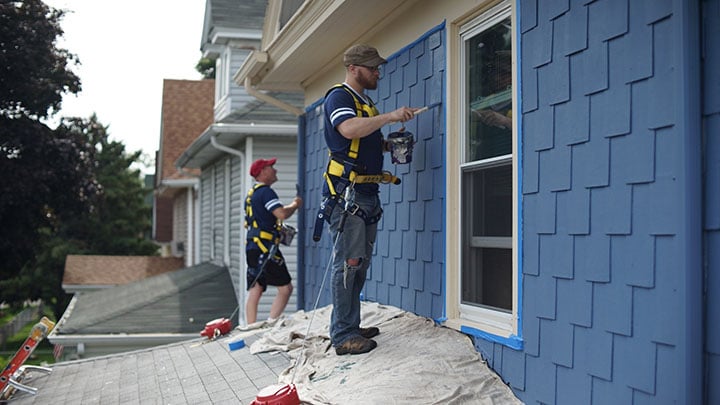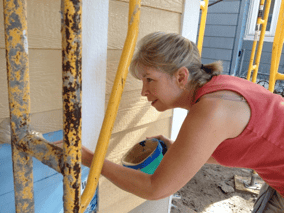DIY Organizing Tips [VIDEO]
It's time for another episode of DIY Friday at the WCCO studios! New Brighton ReStore Manager Jan Hagerman joins hosts A.J. and Heather to share some...
3 min read
 ReStore Staff
:
12:15 PM on April 10, 2024
ReStore Staff
:
12:15 PM on April 10, 2024

The warm weather has arrived, and it's time to tackle some of those outdoor painting projects you couldn't complete during the winter months. Whether you're painting your deck, trim, or a large project you weren't able to paint indoors, temperature can impact your project.
Here are some tips about temperature and prep work to make sure your spring painting jobs turn out just right.
Although your paint may dry quickly, it can take days to cure (reach maximum hardness), and temperature plays a role.
The type of paint also makes a difference. If you’re using a water-based (or latex) paint, it should be at least 50 degrees outside when you're painting. Water-based paint also needs several days to cure, and if the temperature falls below freezing (32 degrees), the paint won't form a good film. This will affect how long the paint will last on the surface because the poorly cured paint will be more likely to crack or chip.
If it’s too cold during the day when you paint outside and the temperature dips even lower at night, the water will evaporate too slowly, leaving your paint looking lackluster. Cold temperatures and dew can also cause mildew and leave stains, ruining the paint job. When in doubt, check the label on your paint can and keep an eye on the weather forecast.
Oil-based paints are a little more forgiving and can be used when the temperature is between 40 and 90 degrees.

Relative humidity affects how the paint dries. A good rule of thumb is to make sure the humidity is forecasted to remain between 40- 70% for several days when you paint outside. This will ensure the paint dries properly, preventing cracking and peeling, and improving the paint’s longevity.
Also, check your weather forecast for rain. While it’s more important that the surface is dry before rather than after you paint, rain can cause the paint to improperly bond to the surface. If rain is forecasted within four to eight hours of painting, you might want to wait a day or two.
Preparation is important for any home improvement job but especially when you paint outside. Before you get started, do the following:
To make sure your painting project turns out well, we’ve got a few extra tips and tricks for you.
For all your painting materials and to get more tips, stop by the Twin Cities Habitat ReStore in Minneapolis and New Brighton! Also, when your job is done, bring your leftover paint to us - we'll recycle it through Paint Care.

Your gift unlocks bright futures! Donate now to create, preserve, and promote affordable homeownership in the Twin Cities.
![DIY Organizing Tips [VIDEO]](https://restore.tchabitat.org/hubfs/2024%20Blog%20Images/January/organize%201.png)
It's time for another episode of DIY Friday at the WCCO studios! New Brighton ReStore Manager Jan Hagerman joins hosts A.J. and Heather to share some...
![Easily Transform Cheap Furniture with Chalk Paint [VIDEO]](https://restore.tchabitat.org/hubfs/blog/2016/October/DIY%20Transform%20Furniture%20-%20Featured%20Photo.jpg)
Chalk painting is a really popular and easy technique to give your furniture a velvety, vintage look, or more of a distressed look. Twin Cities...
![Learn from the Pros: How to Paint Furniture [VIDEO]](https://restore.tchabitat.org/hubfs/blog/2017/January/DIY%20Paint%20Furniture%20-%20Featured%20Photo%20v2.jpg)
If you've got some old pieces of furniture sitting around and want to give them a new life, or want to give your house some personality, painting the...